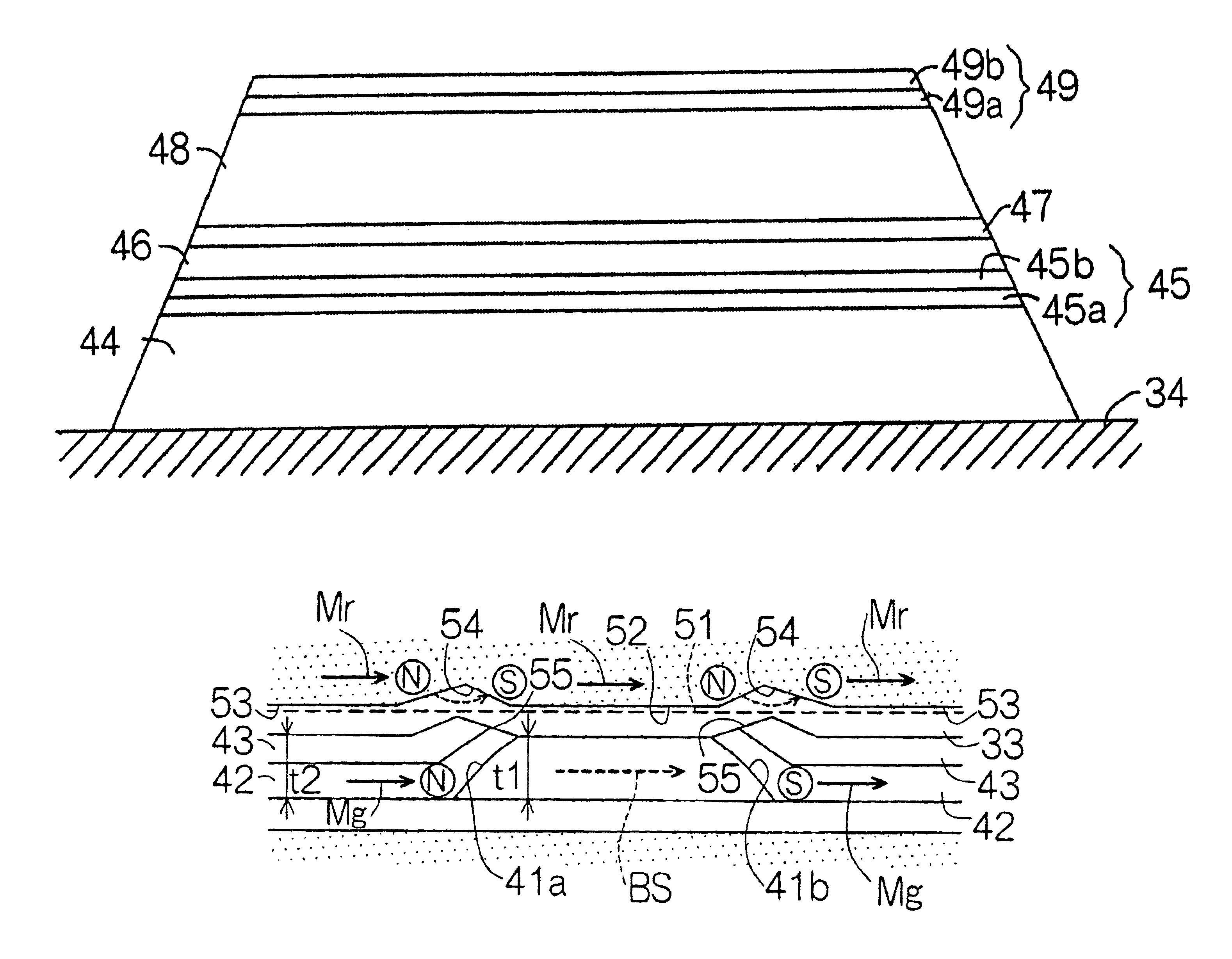Magnetoresistive transducer having stronger longitudinal bias field
a technology of magnetoresistive transducers and longitudinal bias fields, which is applied in the field of magnetoresistive transducers, can solve the problems that the barkhausen noise cannot be sufficiently reduced in the magnetoresistive transducer, and achieve the effects of reducing the intensity of the magnetic pole generated at the tip end of the domain control layer, enhancing the longitudinal bias field, and suppressing the magnetic flux from the domain control layer into the raised portion
- Summary
- Abstract
- Description
- Claims
- Application Information
AI Technical Summary
Benefits of technology
Problems solved by technology
Method used
Image
Examples
third embodiment
e rear / write eletromagnetic transducer for illustrating the structure of a magnetoresistive (MR) element according to the present invention;
[0035]FIG. 12 is an enlarged partial front view of the read / write electromagnetic transducer for illustrating the process of magnetizing the domain control stripe layers in the MR element of the third embodiment;
[0036]FIG. 13 is an enlarged partial front view of the read / write electromagnetic transducer for illustrating the process of magnetizing the upper shield layer in the MR element of the third embodiment;
[0037]FIG. 14A illustrates a profile for the line of induction in the MR element of the third embodiment; and
[0038]FIG. 14B illustrates a profile for the magnitude of the magnetic field in the MR element of the third embodiment.
DESCRIPTION OF THE PREFERRED EMBODIMENTS
[0039]FIG. 1 schematically illustrates the interior structure of a hard disk drive (HDD) 11 as an example of a magnetic recording medium drive or storage device. The HDD 11 in...
PUM
 Login to View More
Login to View More Abstract
Description
Claims
Application Information
 Login to View More
Login to View More - R&D
- Intellectual Property
- Life Sciences
- Materials
- Tech Scout
- Unparalleled Data Quality
- Higher Quality Content
- 60% Fewer Hallucinations
Browse by: Latest US Patents, China's latest patents, Technical Efficacy Thesaurus, Application Domain, Technology Topic, Popular Technical Reports.
© 2025 PatSnap. All rights reserved.Legal|Privacy policy|Modern Slavery Act Transparency Statement|Sitemap|About US| Contact US: help@patsnap.com



